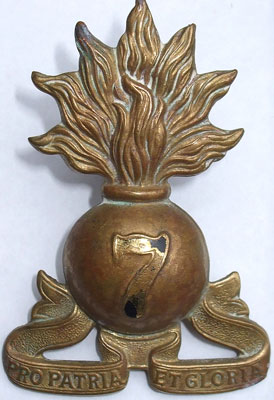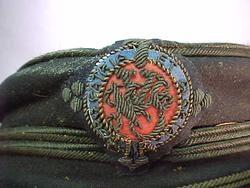
In 1824 the units that would later become the 7th Regiment adopted a grey uniform coatee as a distinguishing feature of it's uniform. The Regiment was known as the "GREY JACKETS."

7th Regiment uniforms print. @ 1850

7th Regiment uniforms from a print in Harpers Weekly, July 14, 1860

This photo from the 1960s shows members of the 7th in full dress. Note that the uniform has changed little in the past 100 years
The below picture was taken in early 1861 and shows members of the Engineer Corps of the 7th Regiment in their distinctive grey jackets. You might be able to make out the "10" on their caps. This was because the Engineer Corps was the 10th company (later called "K" company) of the 7th Regiment and took part in the campaign around Washington in 1861. At the time the 101 members of the Engineer Corps were responsible for emplacing and manning their two mountain howitzers.
The soldier in the front row, center is E. Wight. He is shown on the roster of the Engineer Corps and Company K from June 17th, 1854 to November 18, 1875. They are all equipped with the Model 1855 rifle with Maynard tape priming system and sword bayonets.
Information from THE ENGINEER CORPS AND "K" COMPANY, 7th REGIMENT, N.G.S.N.Y., a 23 page booklet published in @ 1876. Photo: National Archives.


7th N.Y. at Camp Cameron, Washington, D.C.

7th N.Y. Regiment cartridge box, ca. 1820-1830. Wooden block with holes for 16 rounds. The "NG" stands for "NATIONAL GUARDS", a name that from 1824 to 1832 was specific to the unit. This box is marked "Watervliet Arsenal"

7th Regiment crossbelt plate
The jacket below, as well as the shako, is the style used in the late 19th and early 20 century. The epaulettes are missing. The jacket has a label indicating 107th Infantry so it is post WWI.
 

"Potter" was Nathan A. Potter, a bugler in "I" company, wounded on September 29, 1918
 
Cap device, unknown date, possibly 1920's
Courtesy of Peter Jones, U.K.
Kepi worn in the 1870's and 1880's
 


|